Beautiful Azalea - Care and Cultivation
Azaleas are flowering shrubs in the genus Rhododendron, particularly the former sections Tsutsusi (evergreen) and Pentanthera (deciduous). Azaleas bloom in the spring (April and May in the temperate Northern Hemisphere, and October and November in the Southern Hemisphere), their flowers often lasting several weeks. Shade tolerant, they prefer living near or under trees. They are part of the family Ericaceae.
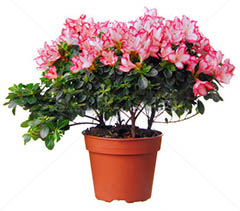
A small, strongly branching bush with small leaves delights the eyes in winter with a whole cluster of amazing flowers. Azalea flowers can be double and single, ruffled and fringed, in various shades of pink, as well as white, red, purple, and variegated. There are early and late flowering varieties.
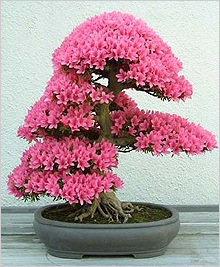
The homeland of azaleas is China, Japan, Southeast Asia, and they also grow naturally in the southern regions of Europe and North America.
In Eastern countries, a blooming azalea bush is a symbol of joy and peace, often shaped into bonsai.
Botanists use the term "azalea" only to denote a subgenus within the large Rhododendron genus. However, in horticulture, both names have been preserved since the time of Carl Linnaeus: deciduous species are usually called azaleas, and evergreen ones are called rhododendrons. In the trade, the same species can be encountered under different names, depending on the popularity of one or the other term in a particular region or country.
Plant enthusiasts have selectively bred azaleas for hundreds of years. This human selection has produced over 10,000 different cultivars which are propagated by cuttings.Azalea seeds can also be collected and germinated.
Azaleas are often received as gifts during their flowering period. After briefly delighting the fortunate owner with its elegant flowers, the azalea bush sheds them and unfortunately ends up being discarded.

You can grow azalea indoors much like any other houseplant, but as with other blooming plants, there are a few tricks you need to know about the care of indoor azalea if you want to keep them blooming year after year. The first step in growing an azalea houseplant is to choose the right shrub. You are looking for greenhouse azaleas, not hardy azaleas, which are only grown outdoors.
Azalea Varieties
As flowering indoor plants, numerous different varieties derived from two main species are cultivated:
- Indian Azalea or Rhododendron simsii, also known as Sims Azalea;
- Japanese Azalea or Rhododendron obtusum.

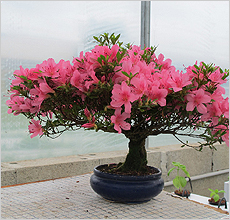
Both types are dwarf shrubs, reaching a height of 30-50 cm. Numerous varieties of indoor and garden azaleas have been developed based on natural species. They differ in the size and shape of the bush, but most importantly, in the flowers. This is clearly seen in photos of blooming indoor azaleas:

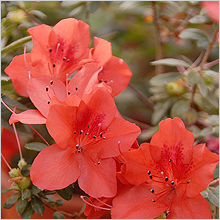

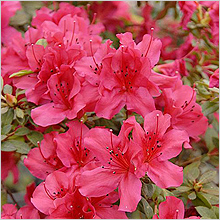
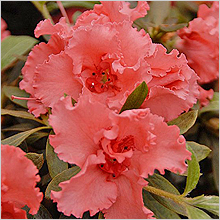
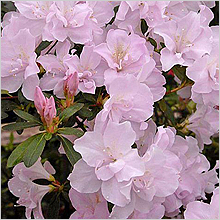
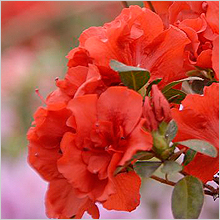
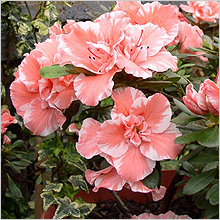
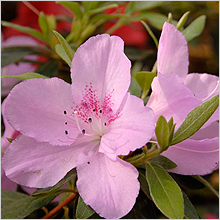
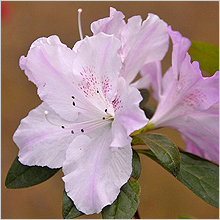
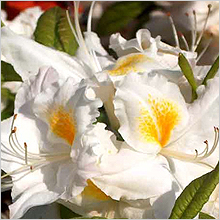
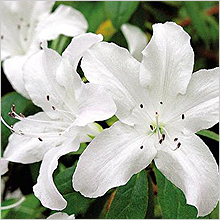
Indoor Azalea Care Tips
Azalea is a somewhat capricious indoor plant. However, with proper care, it will delight you many times with an abundance of its amazing flowers. It is essential to understand the peculiarities of azalea care in indoor conditions and follow certain rules for caring for this flowering plant, based on an understanding of its natural habitat. We must mimic nature and provide plants with the ingredients they need.
Light
Azalea cannot tolerate direct sunlight; it requires diffused light or partial shade. In summer, it is recommended to take it outdoors, avoiding the scorching sun. It is best to bury it in the garden with the pot in light shade. Azaleas benefit from a good summer rain.
If the climate in your area is mild, some azalea varieties can be grown in open ground, protecting them from frost in winter and enjoying an abundance of flowers in summer.
Humidity
Air inside our heated homes can be dry. Beware the hot, dry air of a heating vent! To increase the humidity around your plant, place the pot on a tray filled with wet pebbles or use a room humidifier. Misting of the leaves is not recommended, as this can promote fungus. Don’t fertilize Encores until spring flowering is complete. When you do, be sure you use a fertilizer for acid-loving plants.
Water.
Moisture is very important for indoor azaleas. Never let these plants dry out, but remember the soil should be moist, not waterlogged. If possible, once a week submerge your potted azalea in a larger container of water, pot and all, so that the potting mix rehydrates thoroughly. When the bubbles stop, pull it out, and let it drain.It is recommended to acidify the water for watering azaleas (a few crystals of citric acid per 1 liter of water) to avoid lowering the soil acidity. Azaleas should be watered with room temperature water (never icy). Watering is slightly reduced in autumn.
Never loosen the soil, as azaleas have delicate roots that can be easily damaged.
In cool greenhouses in winter, they practice placing ice or snow on the soil surface under the plant. The snow slowly melts, gradually saturating the soil with meltwater. However, in warm apartments, a significant temperature difference between the roots and the crown of the plant can adversely affect flowering.
Temperature
Azalea is very picky about temperature. In winter, they need cool air temperatures (60-70°F/16-21°C), but with proper care they can grow at 20-22 °C. If the azaleas rested in the garden in the summer, it is very important to move them into the apartment before the start of the heating season.
Soil
Azaleas are generally slow-growing and do best in well-drained acidic soil (4.5–6.0 pH). Heather soil is best suited for it, but you can replace it with a mixture of coniferous and peat soil (2:1) with the addition of a small amount of river sand. Azaleas grow well in hydroponics. You can buy at a flower shop a specially prepared soil mixture for acidophilic (“acid-loving”) plants, which include azaleas.
Repoting
Young plants are replanted annually, old plants – once every 2-3 years. When replanting azaleas, it is undesirable to disturb the root ball; instead of replanting, transshipment with the addition of fresh substrate is recommended.
Fertilizer
Fertilizing azaleas during the growing season will keep them healthy and flowering. With azalea care should be taken to use a fertilizer specially made for acid-loving plants. Feed every 2 weeks with a high-phosphorus fertilizer that contains iron, diluted by half. Yellow leaves with green veins are a sign of a nutrient deficiency caused by too much lime.
Propagation of Azaleas
Azaleas can be propagated through seeds, cuttings, division of the bush, and grafting. Seed propagation is a labor-intensive and complex process, mostly used by professional horticulturists for cultivating new varieties.
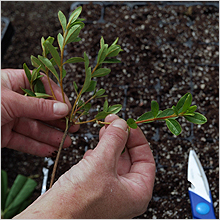
Propagation by Cuttings:
In home conditions, azaleas are propagated by stem semi-woody cuttings. Azaleas are challenging to root. Cuttings should be 5-8 cm in length, semi-woody. Green cuttings wither quickly, while fully woody ones take a long time to root. Cutting can begin in the middle of winter, but the best results are obtained with spring-summer cuttings (from March to June). Propagation is done from May to August. Faster and better rooting occurs in a substrate with acidic pH, such as coniferous soil or sphagnum peat. Freshly cut cuttings are treated with rooting stimulants, pollinated with growth substances, planted vertically at a depth of 1-2.5 cm, covered with a glass jar or polyethylene film, regularly watered, and sprayed. The optimal rooting temperature is 25°C. Cuttings root in 3-5 weeks.
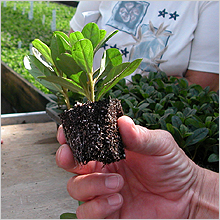
Division of the Bush:
Azaleas that are 3-4 years old can also be divided into several parts. The plant's roots are thin and surface, so dividing should be done with extreme caution.
Diseases and Pests
Azaleas are susceptible to damage from azalea leaf miner, greenhouse whitefly, mealybugs, as well as various other insects, mites, and mollusks.
Другие комнатные растения, цветущие зимой:




